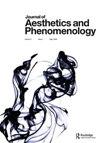Negativity in the Heart of Nature: A Study of Art of Vincent Van Gogh through Hegel, Nietzsche, and Heidegger
IF 0.2
0 PHILOSOPHY
引用次数: 0
Abstract
ABSTRACT The focus of this essay is the art of Vincent van Gogh and the way in which van Gogh’s understanding of nature informs his landscape painting. Van Gogh’s descriptions of the relationship between nature and his art betray certain humanist views that invest nature with anthropomorphic elements. Van Gogh seeks to subdue nature in order to uncover its essence and divulge its inner truth. I do not defend van Gogh on these points as it is not my position that there is some hidden truth that must be revealed about nature. I also do not hold that, at bottom, nature and human beings are one. In fact, I argue that these views, precisely, pave the way to the tragedy of van Gogh’s life, because they make him blind to the fact that, in his attempts at wresting truth from nature, he works to uproot himself. My interest in this paper lies along the lines of answering the question that van Gogh’s articulation of his artistic process allows us to ask. This question is: What is the role of aesthetic feeling in the artist’s ability to understand nature and make it intelligible to his audience? The correlate of this question is: How and at what cost does van Gogh’s landscape painting accomplish this transformation of aisthesis into art? In my analyses of van Gogh’s art, nature, and the relationship between feeling and intelligibility, I rely on Nietzsche’s, Heidegger’s, and Hegel’s articulations of these subjects.自然之心的否定性——从黑格尔、尼采、海德格尔看梵高的艺术
本文的重点是梵高的艺术,以及梵高对自然的理解是如何影响他的风景画的。梵高对自然和他的艺术之间的关系的描述背叛了某种人文主义的观点,赋予自然以拟人化的元素。梵高试图征服自然,以揭示自然的本质,揭示自然的内在真相。我并不是在这些观点上为梵高辩护,因为我并不认为有一些隐藏的真理必须被揭示出来。我也不认为自然和人类本质上是一体的。事实上,我认为正是这些观点为梵高人生的悲剧铺平了道路,因为它们使他忽视了这样一个事实:在他试图从自然中夺取真理的过程中,他是在把自己连根拔起。我对这篇论文的兴趣在于回答梵高对他的艺术过程的表达允许我们提出的问题。这个问题是:在艺术家理解自然并使其为观众所理解的能力中,美感的作用是什么?这个问题的关联是:梵高的风景画是如何以及以什么代价完成审美向艺术的转变的?在我分析梵高的艺术、自然以及感觉和可理解性之间的关系时,我依赖于尼采、海德格尔和黑格尔对这些主题的阐述。
本文章由计算机程序翻译,如有差异,请以英文原文为准。
求助全文
约1分钟内获得全文
求助全文

 求助内容:
求助内容: 应助结果提醒方式:
应助结果提醒方式:


